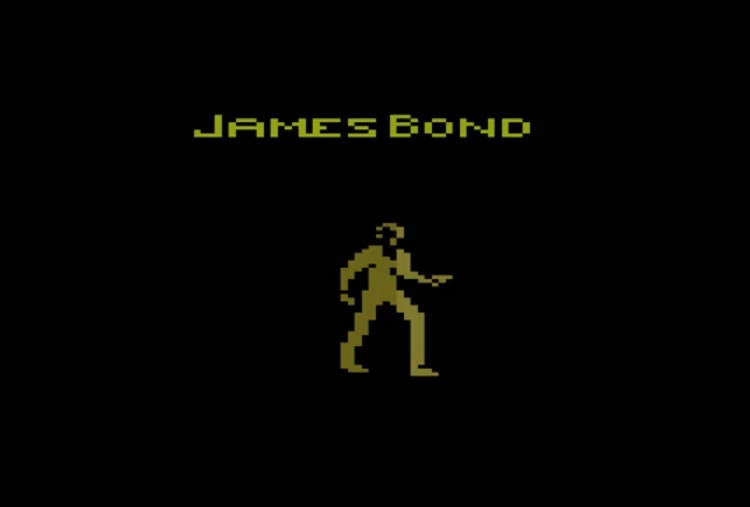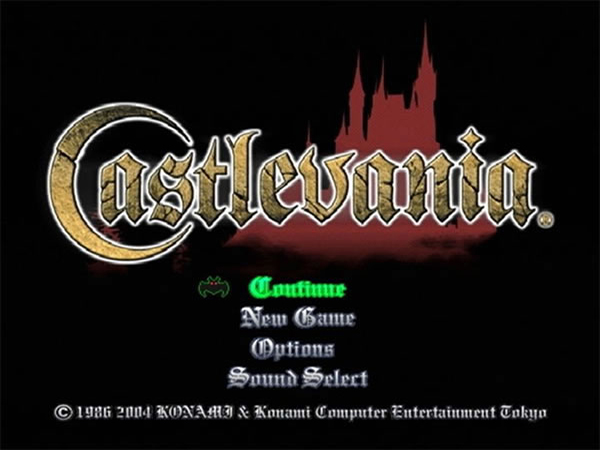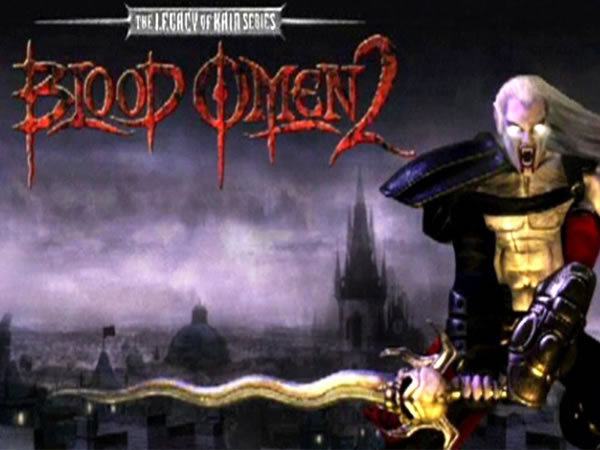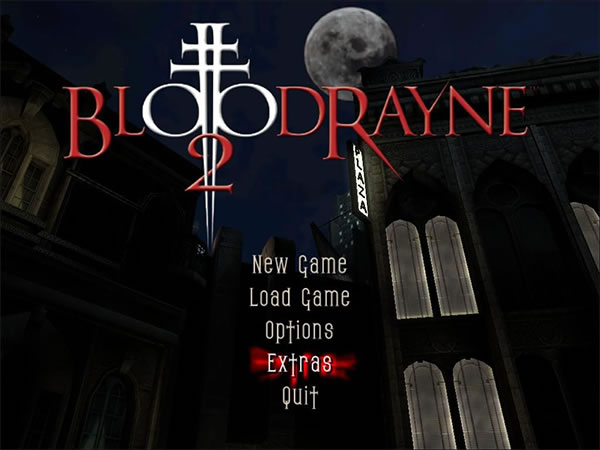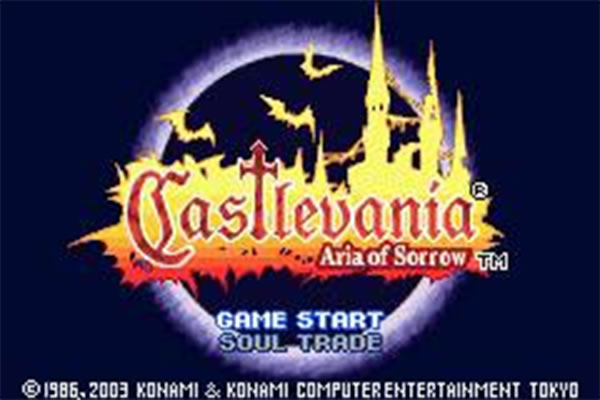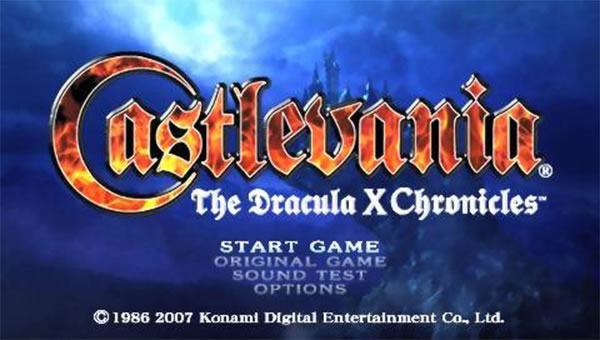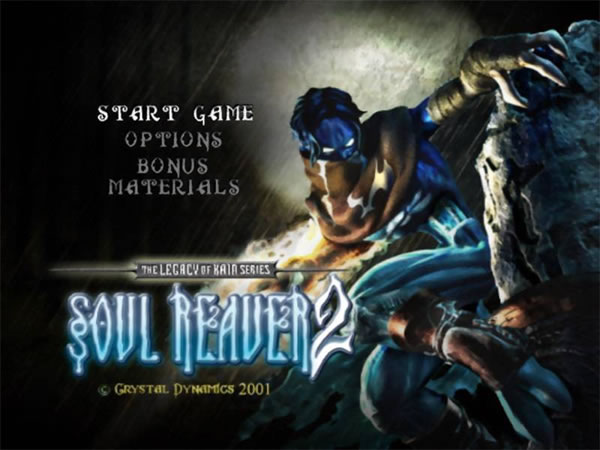- CLASSIC MAGAZINES
- REVIEW CREW
A show recapping what critics thought back
when classic games first came out! - NEXT GENERATION'S BEST & WORST
From the worst 1-star reviews to the best
5-stars can offer, this is Next Generation! - NINTENDO POWER (ARCHIVE)
Experience a variety of shows looking at the
often baffling history of Nintendo Power! - MAGAZINE RETROSPECTIVE
We're looking at the absolutely true history of
some of the most iconic game magazines ever! - SUPER PLAY'S TOP 600
The longest and most ambitious Super NES
countdown on the internet! - THEY SAID WHAT?
Debunking predictions and gossip found
in classic video game magazines! - NEXT GENERATION UNCOVERED
Cyril is back in this spin-off series, featuring the
cover critic review the art of Next Generation! - HARDCORE GAMER MAGAZING (PDF ISSUES)
Download all 36 issues of Hardcore Gamer
Magazine and relive the fun in PDF form!
- REVIEW CREW
- ELECTRONIC GAMING MONTHLY
- ELECTRONIC GAMING MONTHLY RANKS
From Mario to Sonic to Street Fighter, EGM
ranks classic game franchises and consoles! - ELECTRONIC GAMING MONTHLY BEST & WORST
Counting down EGM’s best and worst reviews
going year by year, from 1989 – 2009! - ELECTRONIC GAMING BEST & WORST AWARDS
11-part video series chronicling the ups and
downs of EGM’s Best & Worst Awards!
- ELECTRONIC GAMING MONTHLY RANKS
- GAME HISTORY
- GAME OVER: STORY BREAKDOWNS
Long-running series breaking down game
stories and analyzing their endings! - A BRIEF HISTORY OF GAMING w/ [NAME HERE]
Real history presented in a fun and pithy
format from a variety of game historians! - THE BLACK SHEEP
A series looking back at the black sheep
entries in popular game franchises! - INSTANT EXPERT
Everything you could possibly want to know
about a wide variety of gaming topics! - FREEZE FRAME
When something familiar happens in the games
industry, we're there to take a picture! - I'VE GOT YOUR NUMBER
Learn real video game history through a series
of number-themed episodes, starting at zero! - GREAT MOMENTS IN BAD ACTING
A joyous celebration of some of gaming's
absolute worst voice acting!
- GAME OVER: STORY BREAKDOWNS
- POPULAR SHOWS
- DG NEWS w/ LORNE RISELEY
Newsman Lorne Riseley hosts a regular
series looking at the hottest gaming news! - REVIEW REWIND
Cyril replays a game he reviewed 10+ years
ago to see if he got it right or wrong! - ON-RUNNING FEUDS
Defunct Games' longest-running show, with
editorials, observations and other fun oddities! - DEFUNCT GAMES QUIZ (ARCHIVE)
From online quizzes to game shows, we're
putting your video game knowledge to the test!- QUIZ: ONLINE PASS
Take a weekly quiz to see how well you know
the news and current gaming events! - QUIZ: KNOW THE GAME
One-on-one quiz show where contestants
find out if they actually know classic games! - QUIZ: THE LEADERBOARD
Can you guess the game based on the classic
review? Find out with The Leaderboard!
- QUIZ: ONLINE PASS
- DEFUNCT GAMES VS.
Cyril and the Defunct Games staff isn't afraid
to choose their favorite games and more! - CYRIL READS WORLDS OF POWER
Defunct Games recreates classic game
novelizations through the audio book format!
- DG NEWS w/ LORNE RISELEY
- COMEDY
- GAME EXPECTANCY
How long will your favorite hero live? We crunch
the numbers in this series about dying! - VIDEO GAME ADVICE
Famous game characters answer real personal
advice questions with a humorous slant! - FAKE GAMES: GUERILLA SCRAPBOOK
A long-running series about fake games and
the people who love them (covers included)! - WORST GAME EVER
A contest that attempts to create the worst
video game ever made, complete with covers! - LEVEL 1 STORIES
Literature based on the first stages of some
of your favorite classic video games! - THE COVER CRITIC
One of Defunct Games' earliest shows, Cover
Critic digs up some of the worst box art ever! - COMMERCIAL BREAK
Take a trip through some of the best and
worst video game advertisements of all time! - COMIC BOOK MODS
You've never seen comics like this before.
A curious mix of rewritten video game comics!
- GAME EXPECTANCY
- SERIES ARCHIVE
- NINTENDO SWITCH ONLINE ARCHIVE
A regularly-updated list of every Nintendo
Switch Online release, plus links to review! - PLAYSTATION PLUS CLASSIC ARCHIVE
A comprehensive list of every PlayStation
Plus classic release, including links! - RETRO-BIT PUBLISHING ARCHIVE
A regularly-updated list of every Retro-Bit
game released! - REVIEW MARATHONS w/ ADAM WALLACE
Join critic Adam Wallace as he takes us on a
classic review marathon with different themes!- DEFUNCT GAMES GOLF CLUB
Adam Wallace takes to the links to slice his way
through 72 classic golf game reviews! - 007 IN PIXELS
Adam Wallace takes on the world's greatest spy
as he reviews 15 weeks of James Bond games! - A SALUTE TO VAMPIRES
Adam Wallace is sinking his teeth into a series
covering Castlevania, BloodRayne and more! - CAPCOM'S CURSE
Adam Wallace is celebrating 13 days of Halloween
with a line-up of Capcom's scariest games! - THE FALL OF SUPERMAN
Adam Wallace is a man of steel for playing
some of the absolute worst Superman games! - THE 31 GAMES OF HALLOWEEN
Adam Wallace spends every day of October afraid
as he reviews some of the scariest games ever! - 12 WEEKS OF STAR TREK
Adam Wallace boldly goes where no critic has
gone before in this Star Trek marathon!
- DEFUNCT GAMES GOLF CLUB
- DAYS OF CHRISTMAS (ARCHIVE)
Annual holiday series with themed-episodes
that date all the way back to 2001!- 2015: 30 Ridiculous Retro Rumors
- 2014: 29 Magazines of Christmas
- 2013: 29 Questionable Power-Ups of Christmas
- 2012: 34 Theme Songs of Christmas
- 2011: 32 Game Endings of Christmas
- 2010: 31 Bonus Levels of Christmas
- 2009: 30 Genres of Christmas
- 2008: 29 Controls of Christmas
- 2007: 34 Cliches of Christmas
- 2006: 33 Consoles of Christmas
- 2005: 32 Articles of Christmas
- 2004: 31 Websites of Christmas
- 2003: 29 Issues of Christmas
- 2002: 28 Years of Christmas
- 2001: 33 Days of Christmas
- NINTENDO SWITCH ONLINE ARCHIVE
- REVIEW ARCHIVE
- FULL ARCHIVE
Dracula
When several Atari programmers left to form Activision and proceeded to produce games for the Atari 2600, Atari sued claiming copyright infringement. The court's decision in favor of Activision opened the floodgates for third-party development on game consoles. Most third-party developers during the second generation ranged from average to god-awful. However, there were a few outstanding ones, particularly the aforementioned Activision and a smaller company called Imagic.
Imagic may not have created new genres or brought in weird concepts like Activision, but the company showed a masterful grasp of both the 2600 and Intellivision's hardware. Imagic was responsible for some of the most technologically advanced and fondly remembered games of the era including Atlantis and Demon Attack. One of the company's triumphs is Dracula.
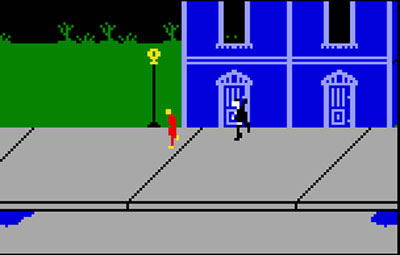 Click For the Full Picture Archive
Click For the Full Picture Archive
Despite the name, Dracula the game has virtually nothing to do with the Bram Stoker novel or the Bela Lugosi movie. You're not seeking Mina, hiding in Carfax Abbey, or being hunted by Van Helsing. You play a generic vampire in a then-modern town. I suspect that the game was named Dracula just for easy recognition.
Your goal in each stage is to catch and drain a certain number of victims and return to your crypt before sunrise. A couple of people are in the open, but others have to be drawn out of their houses by knocking on their doors. As the game progresses, later stages include wolves that slow you down on contact and constables that throw oak stakes that freeze you for a few seconds. The vampire can't die unless he hadn't returned to his crypt in time, and he can't return until he had reached his victim quota for the stage. Fortunately, he has a couple of tricks up his sleeve. He can turn into a bat for a quick escape (though he'd be vulnerable to attacking vultures), and he can turn humans into his slaves to fight off the constables. The slaves are controlled by the second player, creating one of the first instances of asymmetrical multiplayer in video game history.
The gameplay is very well done. The controls are easy to grasp for both the vampire and the slaves though the slanted viewing perspective does make going up or down a little disorienting. Aside from choosing the number of players and difficulty, the keypad is ignored in favor of just the disc and fire buttons. The difficulty curve is very smooth; there were none of the spikes that plagued many second gen games. Repetition does set in after a while, but overall the game plays great.
 Click For the Full Picture Archive
Click For the Full Picture Archive
The game is also a technical showcase for the Intellivision. The animation is amazingly fluid, the impressive-for-the-system scenery makes the cityscapes in Superman on the Atari 2600 look pathetic, and the night-to-day transition is almost as good as that in Frog Bog. The sound effects are minimal, but nothing will have you reaching for the mute button.
A generic vampire may star in Dracula, but the game is anything but generic for the Intellivision. Most of Imagic's games have held up amazingly well even after three decades, and this one is no exception. Though vampire games vary wildly in quality, this one absolutely doesn't suck.
Imagic may not have created new genres or brought in weird concepts like Activision, but the company showed a masterful grasp of both the 2600 and Intellivision's hardware. Imagic was responsible for some of the most technologically advanced and fondly remembered games of the era including Atlantis and Demon Attack. One of the company's triumphs is Dracula.
 Click For the Full Picture Archive
Click For the Full Picture ArchiveDespite the name, Dracula the game has virtually nothing to do with the Bram Stoker novel or the Bela Lugosi movie. You're not seeking Mina, hiding in Carfax Abbey, or being hunted by Van Helsing. You play a generic vampire in a then-modern town. I suspect that the game was named Dracula just for easy recognition.
Your goal in each stage is to catch and drain a certain number of victims and return to your crypt before sunrise. A couple of people are in the open, but others have to be drawn out of their houses by knocking on their doors. As the game progresses, later stages include wolves that slow you down on contact and constables that throw oak stakes that freeze you for a few seconds. The vampire can't die unless he hadn't returned to his crypt in time, and he can't return until he had reached his victim quota for the stage. Fortunately, he has a couple of tricks up his sleeve. He can turn into a bat for a quick escape (though he'd be vulnerable to attacking vultures), and he can turn humans into his slaves to fight off the constables. The slaves are controlled by the second player, creating one of the first instances of asymmetrical multiplayer in video game history.
The gameplay is very well done. The controls are easy to grasp for both the vampire and the slaves though the slanted viewing perspective does make going up or down a little disorienting. Aside from choosing the number of players and difficulty, the keypad is ignored in favor of just the disc and fire buttons. The difficulty curve is very smooth; there were none of the spikes that plagued many second gen games. Repetition does set in after a while, but overall the game plays great.
 Click For the Full Picture Archive
Click For the Full Picture ArchiveThe game is also a technical showcase for the Intellivision. The animation is amazingly fluid, the impressive-for-the-system scenery makes the cityscapes in Superman on the Atari 2600 look pathetic, and the night-to-day transition is almost as good as that in Frog Bog. The sound effects are minimal, but nothing will have you reaching for the mute button.
A generic vampire may star in Dracula, but the game is anything but generic for the Intellivision. Most of Imagic's games have held up amazingly well even after three decades, and this one is no exception. Though vampire games vary wildly in quality, this one absolutely doesn't suck.
HOME |
CONTACT |
NOW HIRING |
WHAT IS DEFUNCT GAMES? |
NINTENDO SWITCH ONLINE |
RETRO-BIT PUBLISHING
Retro-Bit |
Switch Planet |
The Halcyon Show |
Same Name, Different Game |
Dragnix |
Press the Buttons
Game Zone Online | Hardcore Gamer | The Dreamcast Junkyard | Video Game Blogger
Dr Strife | Games For Lunch | Mondo Cool Cast | Boxed Pixels | Sega CD Universe | Gaming Trend
Game Zone Online | Hardcore Gamer | The Dreamcast Junkyard | Video Game Blogger
Dr Strife | Games For Lunch | Mondo Cool Cast | Boxed Pixels | Sega CD Universe | Gaming Trend
Copyright © 2001-2025 Defunct Games
All rights reserved. All trademarks are properties of their respective owners.
All rights reserved. All trademarks are properties of their respective owners.












